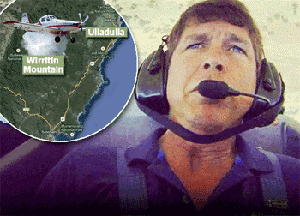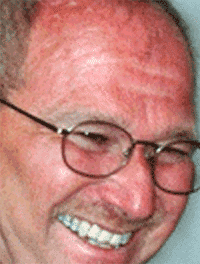
Do you have a Killer Kulture?
You may not even know it yet, but I’ll bet its worse than you think.
Well, I truly don’t know where to start. The topic of this Edition of “A Second on Safety” had been bubbling away in the back of my head for quite some time. Then I had an experience in the last few days that just cemented my mind, and has caused me more than a little distress along the way. More about that later.
Let me go back to the initial incident that had me thinking about something I have called the Killer Kulture. Some time ago now, the State in which I live experienced some horrific bush fires (wildfires). Hundreds of families lost their homes. Fortunately the public were kept pretty well appraised and there was only one (1) fatality. The previous year there had been well over one hundred lives lost, so someone learnt something?
Anyway, toward the end of the bush fire emergency there was an announcement that a water bombing aircraft had crashed and the pilot had been killed. This is a tragedy in itself.  Then I hear last week that the highly experienced pilot (David Black) expressed concern with regard to the veracity of the weather. The Head of the NSW Rural Fire Service, at the time, (Mr Shane Fitzsimmons) had described the expected whether as the worst fire scenario that the State shall ever experience. A “big call” from a person who grew up around fire. Shane’s own father George was a highly respected fire-fighter, who himself was killed when a hazard reduction burn (being conducted by the National Parks Service) went horribly wrong in June of 2000. Along with George, three (3) others lost their lives that day. It still lives in my own memory. As a Trauma Psychologist I was activated to provide Critical Incident Stress Management (CISM) services to a number of National Parks firefighters. So, when I hear that Shane had described this particular day as “the big one”, then I am expecting an even “bigger one”.
Then I hear last week that the highly experienced pilot (David Black) expressed concern with regard to the veracity of the weather. The Head of the NSW Rural Fire Service, at the time, (Mr Shane Fitzsimmons) had described the expected whether as the worst fire scenario that the State shall ever experience. A “big call” from a person who grew up around fire. Shane’s own father George was a highly respected fire-fighter, who himself was killed when a hazard reduction burn (being conducted by the National Parks Service) went horribly wrong in June of 2000. Along with George, three (3) others lost their lives that day. It still lives in my own memory. As a Trauma Psychologist I was activated to provide Critical Incident Stress Management (CISM) services to a number of National Parks firefighters. So, when I hear that Shane had described this particular day as “the big one”, then I am expecting an even “bigger one”.
Now back to David Black. This highly credentialed pilot (he owned an agricultural spraying company with nine aircraft), was heard to express genuine concern that the weather was extreme, and that it would be dangerous to fly. Indeed Mr Black was not the only pilot who is reported to have expressed concern over the horrible conditions. Australian Senator Bill Heffernan gave evidence to a Senate Hearing looking into the operations of the Civil Aviation Safety Authority (CASA). Senator Heffernan stated “….I’m disgusted, as I’m informed that on that day it was pretty rugged weather and … (pilots) were taunted by the Rural Fire Service because these guys didn’t particularly want to fly.” Another pilot is said to have overheard an exchange between Mr Black and another person. The words used were equivalent to, “real men and real pilots would be up there”. As it turns out Mr Black did go “up there”, and he is now dead. A very real-world example of a Killer Kulture in operation – and death and disaster was a consequence.
What does this say about the culture of indifference (Killer Kulture) that was being powerfully promoted by a number of people? It is my hope that the Coronial Enquiry is able to identify the persons concerned and then track this “attitude” vertically up the organization. I cannot imagine that Mr Fitzsimmons would knowingly be party to such aggressive behaviour – solely designed to circumvent personal appreciation of risk – I can almost guarantee that these persons were not pilots. I suggest they were sycophantic mid-level managers more focused on the political prize of putting the fires out, without any real understanding of the applied aviation process by which that might be done. By the way, when George was killed the senior deputy state coroner, Jan Stevenson, pointed to serious deficiencies in the burn-off, including a map lacking sufficient detail, failure to issue some in the team with fire-retardant clothing, unsafe drip-torches and an over-relaxed attitude in the National Park Service to such operations. That last one sounds like indifference to me. In safety-speak we might call that one, risk-tolerance. As far as I am concerned, when you stop listening to your experienced people, and allow greater weight to be applied by political and organizational issues, you are directly contributing to a Killer Kulture.
When I heard this stuff about what happened to Mr Black it had me thinking back to the Deepwater Horizon (Macondo) disaster again. A confidential survey commissioned by Transocean only weeks before the explosion states that workers were concerned about safety practices and feared reprisals if they reported mistakes or other problems. After all, “real men don’t whinge”. Heard that before? Yes, it sounds like a Killer Culture all over? Again, if your operational guys are concerned, then let me tell you there is a real reason to be concerned. Now I am sure that it will be said by others, that senior management wanted to know what was going on. That may or may not be so. The real question here is, why were people conflicted over whether or not they should report or not. There is always a reason – and you need to know. For example, if you dismiss someone for what is believed to be the raising of a safety concern, can you then express any surprise that people don’t report. Of course not! Yes, this is exactly what is reported to have occurred on the Deepwater Horizon – more than once.
If we take a look at some of the artefacts of culture, we get some further insight into the Killer Kulture existing on the Deepwater Horizon. There had been previous spills and fires on the Deepwater Horizon; the US Coast Guard had issued pollution citations 18 times between 2000 and 2010, and had investigated 16 fires and other incidents. The previous fires, spills, and incidents were not considered unusual for a Gulf platform and have not been connected to the April, 2010 explosion and spill. This, in itself, should have been very scary and an enormous warning sign. It was not seen that way, and demonstrates a high degree of ignorance as to what constitutes optimal safety culture in any environment. It seems that “fires” are an accepted practice on a Gulf rig. Surely not! Killer Kulure – surely so.
 Deepwater Horizon had other serious incidents as well, including one in 2008 in which 77 people were evacuated from the platform when it listed and began to sink after a section of pipe was accidentally removed from the platform’s ballast system – ouch. By April 20, 2010 the Deepwater Horizon well operation was already running five (5) weeks late. Leaked internal BP documents clearly indicated that BP engineers had concerns as early as 2009, that the metal casing BP wanted to use might collapse under high pressure. Then as recently as March 2010, the rig experienced problems that included drilling mud falling into the undersea oil formation, sudden gas releases, a pipe falling into the well, and on at least three occasions, the blowout preventer leaking fluid. The rig’s mechanic stated that the Well had problems for months and that the drill repeatedly kicked due to high gas pressure providing resistance……and all these things were ignored. Can you believe it? Killer Kulture – and totally ignored; despite it being reported on multiple occasions. Yet, we see repeats of these sorts of responses throughout the majority of organizations.
Deepwater Horizon had other serious incidents as well, including one in 2008 in which 77 people were evacuated from the platform when it listed and began to sink after a section of pipe was accidentally removed from the platform’s ballast system – ouch. By April 20, 2010 the Deepwater Horizon well operation was already running five (5) weeks late. Leaked internal BP documents clearly indicated that BP engineers had concerns as early as 2009, that the metal casing BP wanted to use might collapse under high pressure. Then as recently as March 2010, the rig experienced problems that included drilling mud falling into the undersea oil formation, sudden gas releases, a pipe falling into the well, and on at least three occasions, the blowout preventer leaking fluid. The rig’s mechanic stated that the Well had problems for months and that the drill repeatedly kicked due to high gas pressure providing resistance……and all these things were ignored. Can you believe it? Killer Kulture – and totally ignored; despite it being reported on multiple occasions. Yet, we see repeats of these sorts of responses throughout the majority of organizations.
 Now if all that was not bad enough survivors of the Deepwater explosion are on record as saying that BP ordered them to take shortcuts on the day of the explosion. It has been said, and independently corroborated, that the Chief Driller (Dewey Revette) had a loud argument with senior BP staff (Dewey was a contract driller) over an instruction to replace the drilling mud with seawater. Many on the rig could not recall ever having drilled without using “mud”. Doug Brown (the chief mechanic) overheard Dewey being told “well, that’s how it’s going to be” and then the BP guy just walked away. Despite his better judgement, Dewey did as instructed. Dewey died – the BP guy/s are alive. It is well known that the drillers were unhappy with the instruction they had been given. These guys are pretty much all dead. If you would like to view the actual interview with survivors then click here .
Now if all that was not bad enough survivors of the Deepwater explosion are on record as saying that BP ordered them to take shortcuts on the day of the explosion. It has been said, and independently corroborated, that the Chief Driller (Dewey Revette) had a loud argument with senior BP staff (Dewey was a contract driller) over an instruction to replace the drilling mud with seawater. Many on the rig could not recall ever having drilled without using “mud”. Doug Brown (the chief mechanic) overheard Dewey being told “well, that’s how it’s going to be” and then the BP guy just walked away. Despite his better judgement, Dewey did as instructed. Dewey died – the BP guy/s are alive. It is well known that the drillers were unhappy with the instruction they had been given. These guys are pretty much all dead. If you would like to view the actual interview with survivors then click here .
There can be absolutely no doubt that the Macondo rig was a Killer Kulture. Now here’s just one of the actions that you might find difficult to comprehend. Many workers admitted to entering fake data into the Safety Management System. Now, this behaviour has already been used as an “excuse”. The Report commissioned (paid for) by Transocean concluded that the Company had a distorted view of Safety on the Rig, due to the false data. Whilst there is some truth to the statement, give me a break. There were so many artefacts above the waterline that this was never going to truly fly. I can only assume Transocean finally reached the same conclusion. After all, they entered a guilty plea. Why do you think that was? At the end of of the day they knew they were wanting and going to be “outed” as a Killer Kulture. Even after all this, they are still in business?
Have you ever considered the impact of language in tilling the soil for the growth of Killer Kultures. Words have enormous power and there is evidence that this too was instrumental in creating an environment that positively supported destructive and disastrous decision-making. In other words, the CEO on numerous occasions fanned the flames of Killer Kulture. Joel Amernic reports “We find that the language used contributed rhetorically to an ideology of economic efficiency and cost control, in a manner that was inconsistent with an enduring safety culture”. Click here to read the full paper “CEO speeches and safety culture: British Petroleum before the Deepwater Horizon disaster.
So now I want to come full circle and ask you a question. If you actually saw someone doing something unsafe would you step and say something to them? Do you believe that the majority of the people who work in your organization would also step up and say something if a task or process looked potentially unsafe? Now, despite what your answer is here, we know that many people do not say anything, let alone stop a process. That was clearly the case on the Deepwater Horizon, and it is also the case at the smallish cardboard recycling business in Cheshire in the UK (approx 120 employees on this site).
So what happened in Cheshire? It was time to clean out one of the hydro-pulping machines. Simply put this is a big drum with a number of blades inside. You put the raw material in the hopper (paper/cardboard), along with water (and some other special chemicals) and the magic happens. Anyway Fred came into work early to clean the hydro-pulper before start of shift. He had arranged this with the Shift Supervisor the night before. Anyway Fred isolated the machine with his lock, and got to work. A hour later it was time to start the shift and Fred was nowhere to be seen. The Shift Supervisor noted Fred’s lock was on the panel. A little closer looking and the remains of Fred were found in the hydro-pulper – there was very little left. All in all, a very sad story. Anyway I happened to be having a meal with the Safety Manager (Jack) for the paper company very recently and we discussed the rest of the story.
As you can imagine a fatality when a machine is isolated has to be very scary. Jack got in the engineering boffin’s and told them to “spare no expense – we need to know how this could have happened”. Well, guess what? The boffin’s came back and told Jack “It could not happen – there is no way at all that the machine, isolated as it was, could start at all”. Great help that was, you might think. The story gets worse.
It seems that Fred had a bit of a reputation. Not a bad one, just one that involved leaving the key in the lock when he isolated a piece of equipment. It seems half the plant knew he did this. I asked Jack whether anyone had given Fred the chat about this. It certainly did not align with the written procedure. Jack told me that someone had spoken to Fred months ago, but it seems the chat did not stick. Employees had indicated to investigators that Fred had still, on occasions, been known to leave the key in the lock. Truth be told, pretty much all the time.
So what happened. Here is where things get really scary. The only way that hydro-pulper could have started was with the lock removed. Clearly Fred did not remove it. He had been minced in the machine. Someone else must have removed that lock to start the machine at beginning of shift. Now I am sure there was no ill will intended, but it would appear somebody actually removed Fred’s lock, started the machine, realized what had happened, turned off the machine, replaced the lock, and actually placed the key on the key-peg in the Shift Supervisors office. If anyone can come up with a better explanation, that would be very helpful – because this one is criminal.
I have to tell you I was, and remain, gob smacked by this turn of events. It would appear that this little paper recycling plant has a real Killer Kulture, or to put it in Jack’s words “we have a killer on the plant, and we don’t know who it was – nobody has resigned/left so they must still be there”.
As horrific as this is, what is it that makes it a Killer Kulture. I am going to travel way back to the whole issue of the key in the lock. Remember the question “If you saw someone doing something unsafe you would always step up and say something to them”. The answer on this Site was clearly No (even though they would like to say, Yes). To take things a step further, it was known that Fred often left the key in the lock, and local management elected to not do anything. Those decisions cost Fred his life. So too did the criminal actions of whoever physically removed Fred’s lock by the way.
So what is a Killer Kulture? In my view it is those workplaces that tolerate those deviations from safe practice and allow those deviations to become the norm without appropriate research/study. So often when we look at accidents we find that a significant component has been the “normalization of deviance”.
Whether your work site has 3000 employees or 120 employees makes little difference. We have to develop a zero tolerance to shortcutting (at every level – particularly senior leadership). Failure to do so means we risk contributing directly to the development of Killer Kultures percolating just beneath the surface. It only takes a circumstance or two and that Killer Kulture rises to the surface and bad things happen.
Worth a thought?
“Killer Kultures are all around us – and we so often do not even notice. You owe it to yourself, your family and other families to do all that you can to rid the world of Killer Kultures. Click here to review just one safety intervention that can assist with the beginnings of that journey”

Brad, Olympic Dam
![]()
“…David Broadbent visited our site as part of the annual safety day. He spoke about what he called killer cultures. For as long as I can remember all we have heard is “unsafe acts” and how our focus has to be almost entirely on weeding out these acts. David very bluntly gave real world examples where what he called sub-optimal decisions (acts) were all but pre-determined by the toxic safety culture (killer culture) that was operating inside the business. We need to be so careful and maybe also focus on other things. I know I will be. Thanks mate.”


